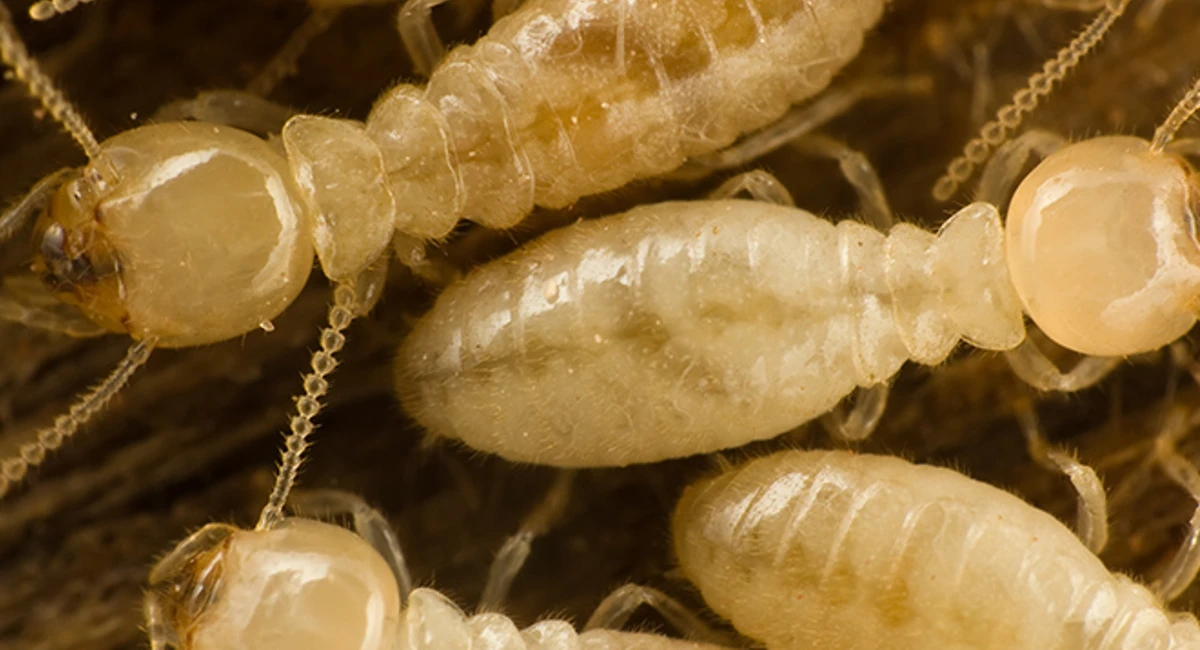For your Home
Login or register for the customer portal
Due to their destructive dietary requirements, termites are considered to be one of the most costly pests, particularly for homeowners.
As with most pests, there are is a vast array of termite species, around 2,750 worldwide. However, only a handful of them are regarded as pests due to their interaction with humans.
The two most common types of termite usually found eating their way through our homes are drywood termites and subterranean termites. So what’s the difference between these two types?
Termites are particularly prominent and a pest in Florida. They are common in areas such as Miami, Tampa and Orlando, where the warm, humid, atmosphere makes them perfect for termite breeding and proliferation.
If you have seen signs of termites around your home or property then be sure to contact your local Ehrlich Pest Control office and get a free property inspection and discuss termite treatment options.

Out of the two, drywood termites are less common and are usually found around coastal or humid regions. They need areas with high humidity as they get all their water by extracting it from the wood. To add to this, the size of a drywood termite colony is usually far smaller than a subterranean colony as they live completely within the wood they infest. This makes them more difficult to detect.
Finally, drywood termites like to live off a diet of both hard and soft woods. They eat along and across the grain on spring and summer wood, so their galleries inside the wood look different from the subterranean termites.
For the most part, drywood termites look very similar to their subterranean cousins. For example, both can be found in shades of white and brown and can sometimes be translucent in color.
However, one thing separating the two species is their size as drywood termites tend to be a lot larger than subterranean termites.
The main difference between drywood and subterranean termites is their preferred living environments.
Drywood termites like to build their nests, and live within wooden structures, which is how they get their name.
.webp)
The common sign of a drywood termite infestation is the appearance of frass.
Frass is termite waste or fecal matter. Unlike subterranean termites, which build nests and tunnels for foraging out of fecal matter, drywood termites have no use for it as they only excavate tunnels in wood. They get rid of their feces by making a small hole in the wood and pushing it out of their home.
A clear sign of a drywood termite infestation is the collection of frass on the floor or flat surface below the wood they are inhabiting. Termite frass often looks like sawdust from afar, but on closer inspection, you will be able to notice granular pellets, often varying in color.
.webp)
As you already know, subterranean termites are the most common species found damaging buildings across the globe.
Compared to drywood termites, subterranean termites live off a diet of softer wood only and tend to excavate tunnels in wood along the grain.
The worker drywood and subterranean termites look similar. The soldier and alate castes are where they tend to differ. Soldier termites have large, yellowish/brown heads and the flying termites (alates) are usually a dark brown/black coloring
As opposed to drywood termites, subterranean termites like to live in the ground. This is because these species of termite need a source of moisture to survive. Subterranean termites need a connection to the ground to keep their nest and tunnels humid enough to survive and for material to build tunnels and nests. If there is plenty of moisture available they can build nests above ground.

Their love and need for high moisture environments provide us with a key sign of a subterranean termite infestation – mud tubes!
Subterranean termites use mud tubes to move around above ground to forage of food. The tubes maintain the humid environment that the termites need and help protect them from predators.
These tubes are constructed from a mixture of soil, wood, saliva and feces. They are dark brown and can often be found along the foundations of a property, where the termites enter the building from the surrounding ground, as well as along floor joints inside the building.
Unfortunately, spotting the signs of termites can be quite difficult and infestations can often go unnoticed until it is too late. However, knowing the difference between drywood and subterranean termites, as well as the common signs to look for, can help protect your home from these wood-eating insects.
Contact your local Ehrlich Technicians for professional solutions to protect your home from termites. Our Technicians will conduct a property inspection and determine the type of termites you are dealing with, where they are coming from, and then provide solutions to get rid of termites and prevent them from returning.
Our new pricing tool can help you get a better estimated cost using a few factors like: